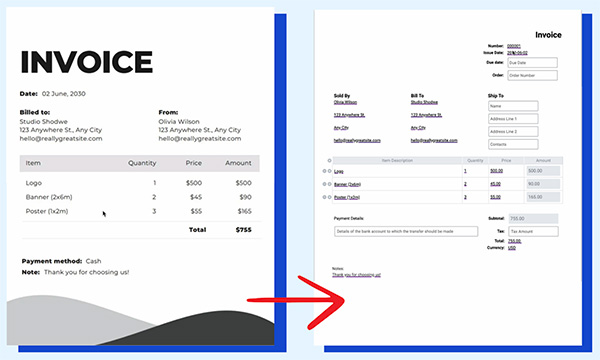Artificial intelligence is reshaping document management by automating data processing, improving security, and optimizing workflows.
In the digital era, businesses generate and process vast amounts of documents daily—from invoices and contracts to compliance records and supply chain documents. Traditional Electronic Document Management (EDM) systems have improved storage and retrieval processes, but they still rely heavily on manual data entry, keyword searches, and predefined workflows.
Artificial Intelligence (AI) is transforming EDM by introducing automation, deep learning capabilities, and self-improving algorithms that optimize how organizations store, process, and analyze documents. AI-driven document management systems (DMS) not only reduce human errors but also enhance compliance, security, and workflow efficiency.
One of the biggest challenges in EDM is organizing and classifying unstructured and semi-structured documents. Traditional methods require manual categorization or rule-based automation, which often fails when document formats change.
AI-powered classification uses Machine Learning (ML), Natural Language Processing (NLP), and Computer Vision to analyze document content, context, and structure. AI models can:
For example, a logistics company processing thousands of bills of lading, invoices, and shipping documents daily can use AI-powered EDM to classify them automatically, extract shipment details, and trigger approvals—reducing processing time from hours to minutes.

OCR (Optical Character Recognition) has long been used for digitizing printed or handwritten text, but traditional OCR struggles with complex document layouts and non-standard fonts.
AI-enhanced OCR goes further by:
In the healthcare sector, patient records often exist in handwritten and typed formats. AI-driven OCR digitizes these records and organizes them into structured formats, ensuring faster retrieval and improved compliance with HIPAA regulations.
AI is not just about processing documents—it can analyze trends, predict risks, and enhance decision-making. With historical data and AI-driven insights, businesses can:
For example, a large retail chain that receives tens of thousands of invoices from suppliers each month can use AI-powered EDM to detect duplicate invoices, prevent overpayments, and ensure financial accuracy—saving the company millions annually.
Searching for documents in a large repository often requires exact keywords or metadata tags. AI-powered chatbots and virtual assistants change this by enabling conversational search.
Instead of typing:
“2023 Vendor Contract Q4”
Users can ask:
“Find the last vendor contract signed in Q4 2023.”
AI understands context and retrieves relevant documents using semantic search and NLP, making document retrieval faster and more intuitive.
A legal firm with millions of archived contracts can use AI-powered search to quickly find documents related to a specific case, reducing research time from days to seconds.
Traditional EDM workflows follow predefined rules, which often lead to inefficiencies when exceptions arise. AI introduces dynamic workflow automation, adjusting in real time based on document content and context.
A manufacturing company processing thousands of purchase orders and invoices monthly can use AI to detect missing PO numbers or inconsistent pricing before sending them for payment, reducing errors and preventing fraud.
For global enterprises, managing multilingual documents is a challenge. AI-powered machine translation and NLP make EDM systems language-agnostic by:
A European e-commerce platform dealing with contracts from over 50 countries can use AI-powered EDM to automatically translate and categorize each document, ensuring accurate record-keeping.
As AI transforms EDM, blockchain integration adds an extra layer of security and transparency. AI-powered blockchain-based EDM can:
Financial institutions use AI and blockchain to secure digital contracts, ensuring compliance with banking regulations while reducing fraud risks.
While AI offers immense potential, implementing AI-driven EDM comes with challenges:
AI is not just improving EDM—it is redefining how organizations handle documents. From intelligent classification and OCR enhancements to predictive analytics, workflow automation, and blockchain security, AI-driven document management is becoming an essential tool for businesses aiming for efficiency, compliance, and cost savings.
As AI technology advances, organizations that embrace AI-powered document automation will gain a competitive edge—eliminating manual bottlenecks, ensuring regulatory compliance, and accelerating business processes.
The future of EDM is not just digital—it is intelligent. Companies that act now will be at the forefront of this transformation.

About the Author:
Alisa Konchenko is a passionate advocate for digital transformation and an expert in electronic document management, AI, and data standardization. As Vice President of Business Development at DocStudio, she helps companies across industries streamline workflows, enhance compliance, and optimize efficiency. She also serves as a Director at Large at PIDX International and is an active member of industry organizations like DBNAlliance, X12, TIA, RSPA, WEDI, and others, contributing to the advancement of digital business standards.
A warm welcome to our guest Didi Caldwell, CEO of Global Location Strategies (GLS) and one of the world’s top site selection experts. With over $44 billion in projects across 30+countries, Didi is reshaping how companies choose where to grow. Here she shares insights on reshoring, data-driven strategy, and navigating global industry shifts.